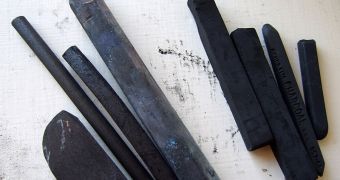Scientists with the University of Texas in Austin (UTA) found in a new study that injecting carbon into a ground – a capture and storage method hailed as a potential alternative to releasing the dangerous chemical in the atmosphere – could cause numerous small earthquakes in areas neighboring the injecting sites.
The conclusion, detailed in a paper published in the November 4 issue of the esteemed journal Proceedings of the National Academy of Science (PNAS), was reached after scientists studied 18 small earthquakes that occurred in western Texas recently, centered around a cluster of oil wells.
According to the team from UTA's Institute for Geophysics, carbon injection in the ground around these wells was most likely responsible for triggering a series of earthquakes measuring around 3 degrees magnitude on the Richter scale.
This work is important because it hints at the effects that injecting carbon dioxide into the ground may have on earthquake risks in a given area. CO2 injections into the ground represent one of the most favored methods of reducing the amount of carbon we put into the atmosphere.
Known as geologic carbon sequestration, this approach would see carbon harvested from various sources (including the smokestacks of coal-fired power plants) and then inserted into the ground to replace shale oil or gases extracted by hydraulic fracturing or other methods.
The study is published ahead of a major international conference to take place in Washington DC this week, where energy secretaries and ministers from the European Union and 22 countries will meet to decide on ways to boost the deployment of CSS technologies, National Geographic reports.
The 18 earthquakes the team analyzed occurred between 2006 and 2011 in the Cogdell oil field, located new Snyder, Texas. The tremors were linked to injecting water into the ground to increase oil production. Whenever water injections stopped, the earthquakes subsided as well.
“I'm not an expert on climate engineering, but a number of solutions have been proposed. Whether they are good ideas or not, the jury is still out. Anytime you mess with the environment, there are unintended consequences,” says study coauthor and IG associate direct, Cliff Frohlich.
CCS technologies and plans are currently being tested at dozens of location around the globe. Scientists are testing to see which storage method is the most efficient, but are also investigating ways to insert carbon dioxide into reservoirs left behind in the crust after hydraulic fracturing.
Even though the study found a link between CO2 injections and earthquakes in the Codgell oil field, it is important to note that such correlations were not discovered in other sites that used the exact same methods of extracting oil and storing carbon.

 14 DAY TRIAL //
14 DAY TRIAL //